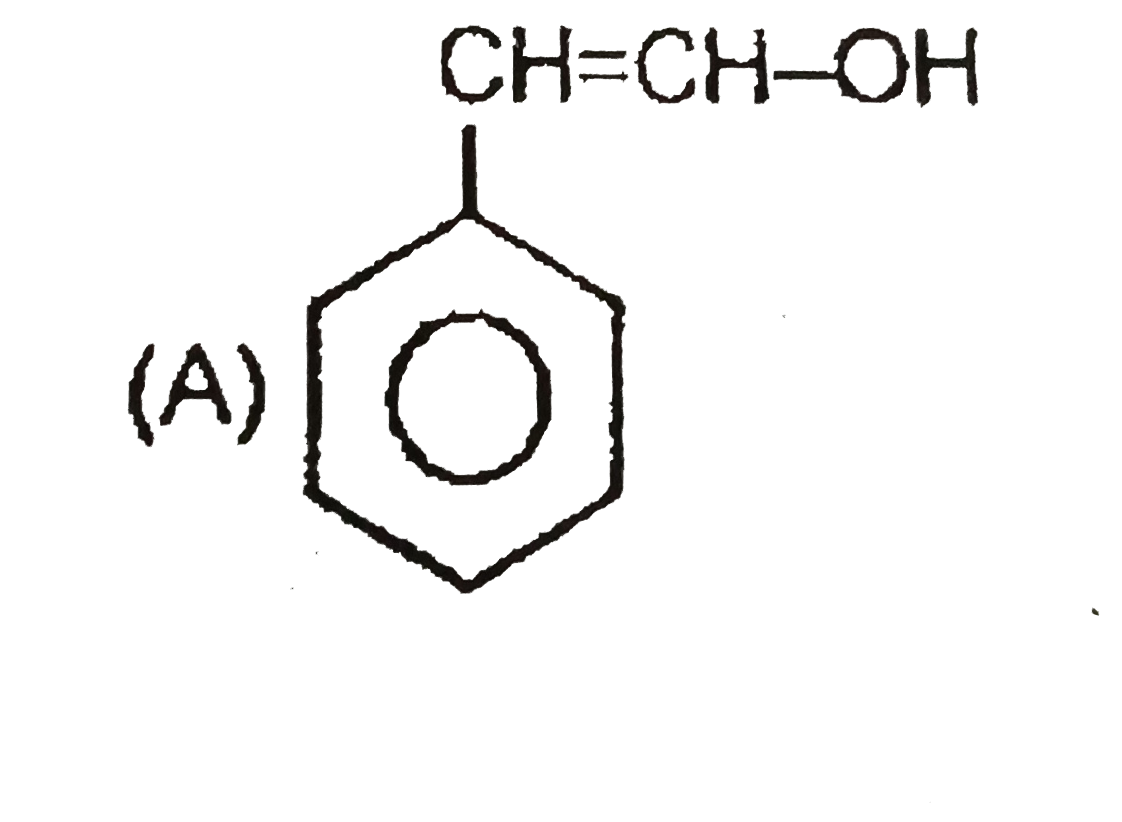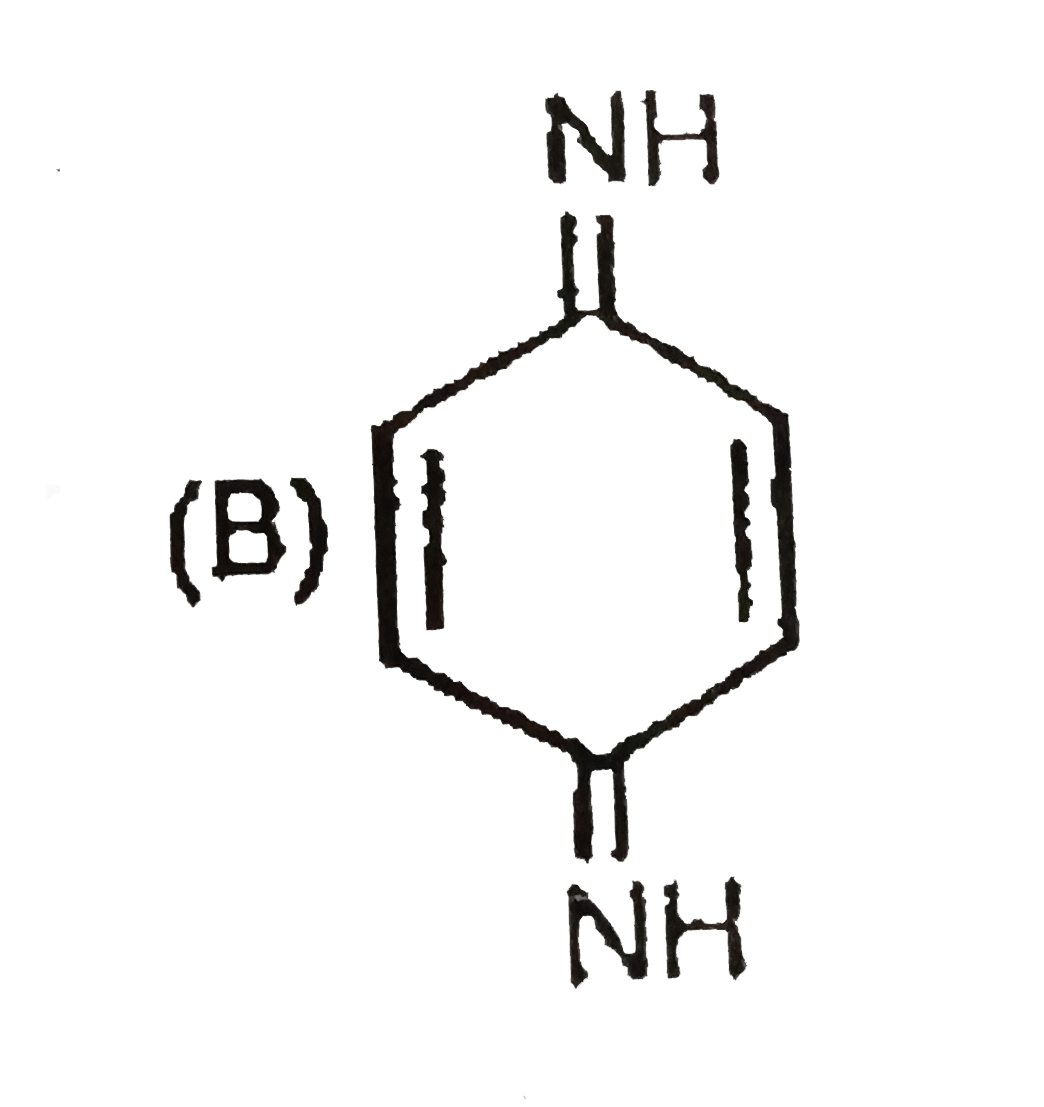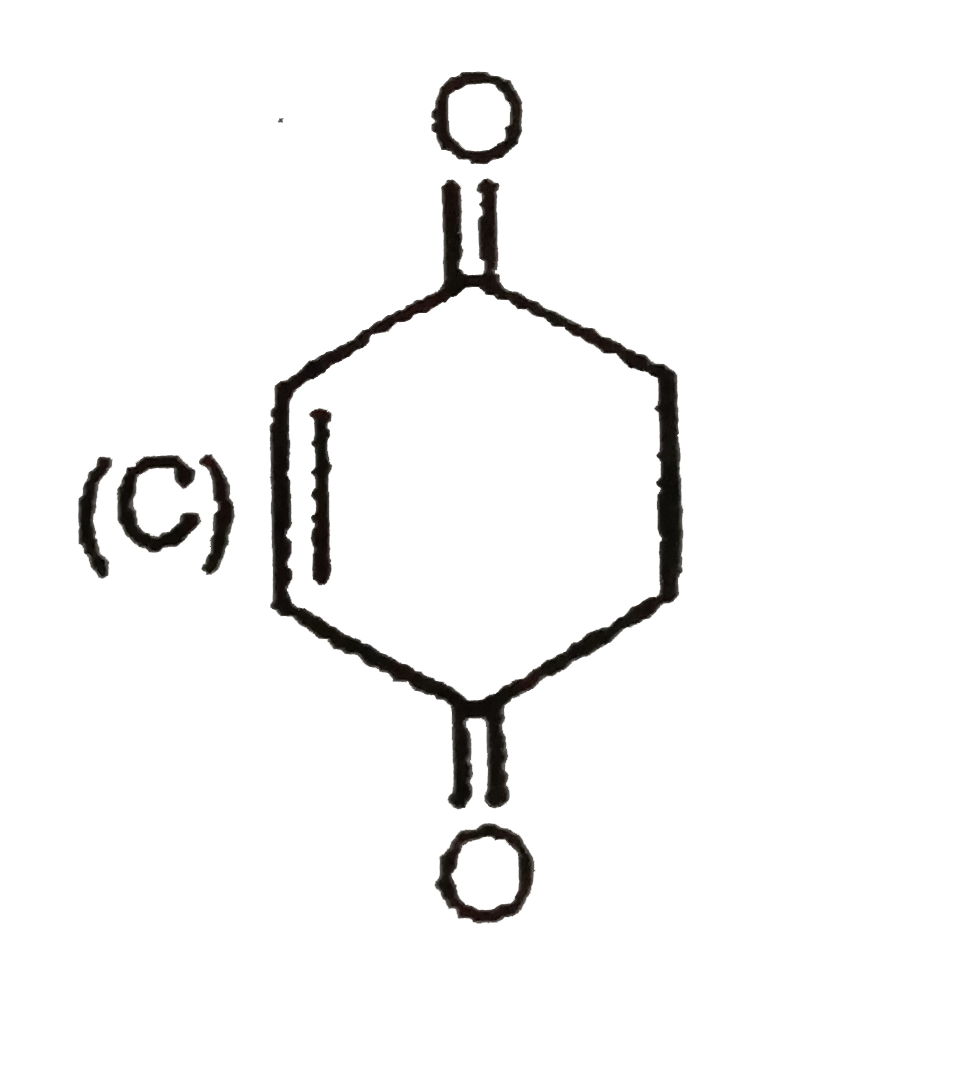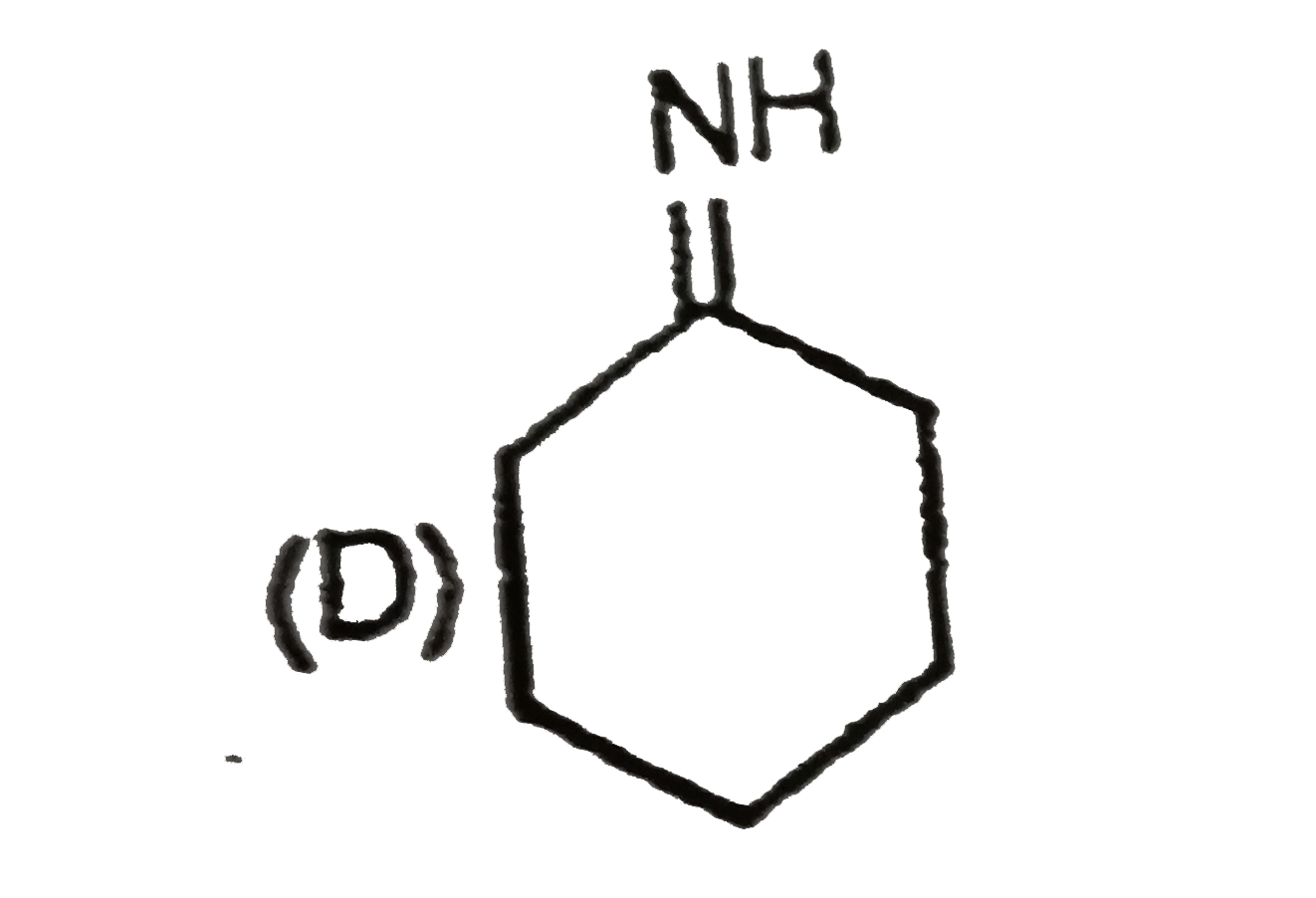Tautomerism is exhibited by
(CH3)3CNO
(CH3)2NH
R3CNO2
RCH2NO2
The correct Answer is:D
To determine which compound exhibits tautomerism, we need to analyze the given options based on the presence of alpha hydrogen and the ability to rearrange into a different structural form.
1. Understanding Tautomerism: Tautomerism is a type of isomerism where two or more compounds can readily interconvert by the movement of a hydrogen atom and a switch of a single bond and a double bond. The most common form of tautomerism is keto-enol tautomerism.
2. Analyzing the Options:
- Option A: C-N-O with three methyl groups attached to carbon. Here, the alpha carbon does not have any alpha hydrogen (hydrogens attached to the carbon adjacent to the carbonyl). Therefore, it cannot exhibit tautomerism.
- Option B: CH3 and CH3NH. This compound does not have a carbonyl group or an alpha hydrogen that can participate in tautomerism. Hence, it does not exhibit tautomerism.
- Option C: N-O2-C-R-R-R. In this case, while there is a nitro group, the alpha carbon does not have an alpha hydrogen. Therefore, it cannot undergo tautomerism.
- Option D: R-CH2-N-O2. This compound has an alpha hydrogen on the carbon adjacent to the nitrogen. When tautomerization occurs, the hydrogen from the alpha carbon can shift to the nitrogen, resulting in a double bond formation between the carbon and nitrogen, leading to the formation of an enol form (R-CH=N-OH).
3. Conclusion: Based on the analysis, Option D (R-CH2-N-O2) is the only compound that can exhibit tautomerism due to the presence of an alpha hydrogen that can participate in the tautomeric shift.
Final Answer:
Option D exhibits tautomerism.
- Option A: C-N-O with three methyl groups attached to carbon. Here, the alpha carbon does not have any alpha hydrogen (hydrogens attached to the carbon adjacent to the carbonyl). Therefore, it cannot exhibit tautomerism.
- Option B: CH3 and CH3NH. This compound does not have a carbonyl group or an alpha hydrogen that can participate in tautomerism. Hence, it does not exhibit tautomerism.
Option D exhibits tautomerism.
Topper's Solved these Questions
- GENERAL ORGANIC CHEMISTRYBOOK - ERRORLESS CHAPTER - GENERAL ORGANIC CHEMISTRYEXERCISE - JEE Section (Only one choice correct answer)
85 Videos
- GENERAL ORGANIC CHEMISTRYBOOK - ERRORLESS CHAPTER - GENERAL ORGANIC CHEMISTRYEXERCISE - JEE Section (More than one choice correct answer)
32 Videos
- GENERAL ORGANIC CHEMISTRYBOOK - ERRORLESS CHAPTER - GENERAL ORGANIC CHEMISTRYEXERCISE - Classification and nomenclature of organic compounds
117 Videos
- GASEOUS STATE BOOK - ERRORLESS CHAPTER - GASEOUS STATE EXERCISE - JEE SECTION JEE (Advanced) 2018 Numeric answer type question
1 Videos
- HALOGEN CONTAINING COMPOUNDBOOK - ERRORLESS CHAPTER - HALOGEN CONTAINING COMPOUNDEXERCISE - Critical Thinking (Jee (Advanced) 2018)
1 Videos
Similar Questions
Knowledge Check
Tautomerism is exhibit by
A B
B C
C D
D
Tautomerism is NOT exhibit by _________.
A BC2H5−O∣∣C−C(CH3)3C
BC2H5−O∣∣C−C(CH3)3C D
D
Tautomerism is not exhibited by
A B
B C
C D
D
